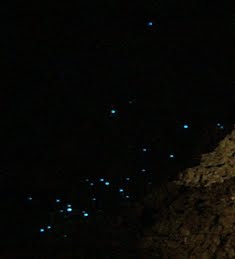In 1907, the Salvation Army purchased Rotoroa Island from a private family with the intentions of setting up a drug and alcohol treatment facility. The first patients began arriving shortly thereafter. For 100 years, the island was a haven for addicts where they created their own mostly self-sufficient society. They provided their own food, built their own facilities, and generally took care of the island. At first it was only men but eventually women were allowed there as well although the sexes were separated on different sides of the island. In 2005, the Sallies sold a 99-year lease to the Rotoroa Island Trust which has turned the island into a haven for native plants and birds. Over 400,000 native plants have been planted including thousands of pohutukawa trees. Starting in 2010, day visitors were allowed on the island as well as overnight lodgers at three holiday homes. The Trust hopes the island will become a sanctuary preserving the beauty of the region for generations to come.
We caught the ferry early Sunday morning along with about 30 other people. It was a cloudy morning but at least it wasn't raining...yet.
About an hour and a half later, we were pulling up to the dock on the island. We were met by the caretaker of the island who gave us a rundown of the rules, told us where everything was located, and what time to be back at the dock so as not to miss the ferry back. The island is pretty small so Shannon and I decided to hike the southern bit first. As we approached the visitor's center we were greeted with an unusual sight: a dozen weka foraging in the grass! Weka are flightless birds native to New Zealand that are classified as vulnerable. I'd never seen one weka much less a dozen. They look like a cross between an American roadrunner, a chicken, and a duck.
We continued up the track taking pictures and enjoying the view of the new growth pohutukawa and other plants.
The spaghetti noodle-esque art installation at the top of the southern hill:
And the view:
At this point, the rain began again in earnest and we were quite happy to have our rain gear.
This little weka fellow was kind enough to pose for a few close ups:
One of the hundreds of baby pohutukawa on the island (they turn into big trees):
For those who may not know, the pohutukawa is also known as the Kiwi Christmas tree as it blooms just in time for Christmas. It is found only on the north island of New Zealand. The trees are beautiful and a particular favorite of ours. In fact, we've decided that we'd like to find a fake pohutukawa to have as our Christmas tree every year.
Our next stop was Mens Bay. This was the men's swim area when the island was still a rehab facility. Now it's a great stretch of beach with a very nice toilet and picnic tables.
It's also the home of a family of oystercatchers, as are a couple of the other beaches. We saw two families with chicks and another couple with some eggs. The little suckers were hard to get close enough to for a photo without one of the parents swooping us but we did manage to get one or two.
Farther along the trail we came to the island cemetery. There are 26 graves here, including patients and staff from over the years. You seriously couldn't ask for a better view from your final resting place.
After completing the southern loop we headed back to the visitor's center for lunch. The center consists of several buildings. There's the main building which houses the museum. It's quite small but packed with history about the island. There's also the old two cell jail and the chapel. A nice big covered area with picnic tables is perfect for pulling out a spread. There's also several big sprawling trees for shade. Unfortunately, it was pouring down rain so I didn't get any pictures of this area.
When we arrived at the visitor's center we found the main building packed with practically everyone who'd been on the ferry with us. Since they were all inappropriately dressed for the weather, they were huddled inside trying to stay warm. Maybe next time they'll check the forecast before an outing. I can't really say much though since I am perpetually inappropriately dressed. I would have been in the same boat as everyone else if not for Shannon packing me warm clothes and rain gear.
After lunch, and after it stopped raining so hard, we headed out to walk the northern loop.
By the time we finished the loop we were cold, damp, and tired. Back at the visitor's center the caretaker gave us complimentary coffee, and hot chocolate for the kids. Even though the coffee was instant, and I'm a giant coffee snob, that coffee was divine! It was a nice touch to offer on a nasty, cold day. After the pick-me-up it was time to catch the ferry back.
Rotoroa is not only a terrific day destination, it also offers overnight accommodation. There are three baches (holiday homes) which will accommodate 6, 7, and 13 people respectively. Prices range from $250/night to $500/night depending on the number of people and the time of year. The website says each house comes with:
BBQ; Essentials: tea, coffee, sugar, cooking oil, flour, soy sauce, balsamic vinegar; Modern kitchen and laundry; Wifi access; CD/Stereo/Blu-ray player; Beach umbrellas and picnic set
What I love about this is that soy sauce and balsamic vinegar are considered essentials!
Despite the weather, we had a wonderful time on the island and can't wait to go back. It will only get prettier over time as the new trees and plants grow. I highly recommend this fantastic destination.




















































